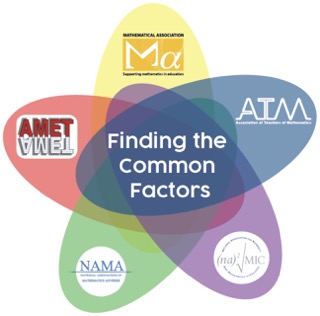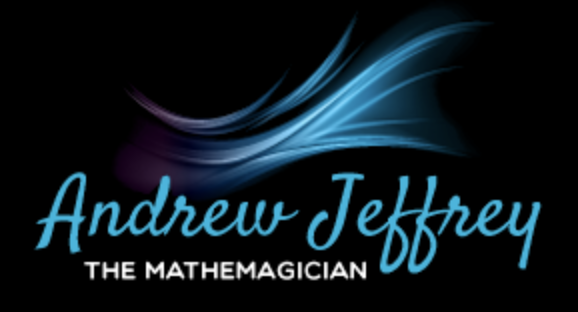
I do love a residential maths conference. A wonderful chance for like-minded educators to share ideas and discover new ones. Even though post-covid I feel more anxious than normal about attending these sort of events, I always come away feeling invigorated and inspired by the wisdom and creativity of others.
In this blog, I aim to say a bit about the sessions I attend, to hopefully give you a flavour of how these events operate.
MONDAY
My first session was run by Pip Huyton and Alison Borthwick, two amazing and experienced maths consultants with whom I’ve often worked over the years. They were talking about their brilliant book, ‘Build it, Say it Write it‘ which talks about ways to engage students with area and perimeter.
I bought the book last year, and it was one of my best purchases in terms of classroom resources.
When I’ve asked students in the past what ‘area‘ means, they have usually replied with ‘it’s the length times the width’, or similar. Rarely if ever do they talk about ‘an amount of flat space.’
One of the most memorable parts of this session were two questions we had to answer. Firstly:
What colour is this circle? (It was a red rim around a yellow disc).
And secondly: ‘What is the definition of perimeter?’ Not as easy is it sounds, it turned out…
Tony Cotton: Tony is a wonderful man. He gets an honourable mention in my ‘Pushing My Ferrari’ book about neuro-diversity. Earlier this year Tony and I got the chance to co-present some webinars for teachers from around the world and it was a joy – he often talks about being autistic and what that brings to his teaching. To be honest, if you’ve ever spent more than 5 minutes talking to Tony (or ‘Ant’ as he prefers to be called) you won’t be surprised to know what a caring and empathetic human he is.
So Tony’s keynote was one of the reasons I was determined to attend this year, and he started with one of the guiding principles of the ATM; specifically, Caleb Gattegno’s assertion that
“The power to learn rests with the learner.“
After talking about some of the work he’d been doing with teachers in Belize, Ant did the following demonstration. 20 of us were called to the front and given folded slips of paper. One had an ‘X’ and the others were blank. We had to walk round and pair up with another random person. If they had an ‘X’ we had to write an X on our paper, and then we repeated this four times. The audience were asked how many slips they expected to have an X on by the end. (Spoiler – it was 15).
We did this again, but this time only wrote an X on our own slip if when we came across someone with an X., we first tossed a coin – only if it fell as ‘heads’ did we write an X, otherwise we continued as before.
This time – just 2 people ended up with an X. Ant explained that this was a practical example of how to teach the mathematics behind mask-wearing and disease transmission.
We then watched two moving and important videos – one from Murray, explaining how his autism affected him, and then from Ant’s friend Maresa Mackeith, aka the ‘Mouthy Poet’, whose poem was simultaneously uncomfortable and beautiful –
https://www.bbc.co.uk/programmes/p0f2dt1t
He talked about the ‘Veil of Ignorance’, from John Rawls ‘A Theory of Justice’. By way of addressing how this might be important to us as teachers, he invited us to think about our classes, and whose voices were not able to be heard, or whether there was a truly just environment for all.
Inevitably the answer will be no, and Ant challenged us to think about what we might do to facilitate learning for everyone, starting with the least-empowered person in the room.
We saw a photo of Ant’s grandson, Tate. Tate loves trying to count to 100 (all children seem to in my experience!) and pointed out that learning to count is a multi-step process; at the start, it’s little more than a script or a spelling process. Interestingly, while playing the counting game, Tate began to ask questions about age, and what constituted a ‘big’ or a ‘small’ number.
Tate loved realising that there were things he did not know.
I loved the phrase ‘revelling in ignorance’; sadly, this is the exact opposite of what is valued in our current system. As John Holt said, “The true test of our intelligence is not what we know, but how we behave when we do not“.
Ant showed us this lovely grid of numbers – all we had to do was say whether or not the number 1000 would appear anywhere on the grid! The purpose of the task of course was to encourage the spotting of patterns and using them to reason.
| 1 | 3 | 5 | 7 | … |
| 2 | 6 | 10 | 14 | … |
| 4 | 12 | 20 | 28 | … |
| 8 | 24 | 40 | 56 | … |
| …… | … | … | … | … |
Ant put up a picture referencing a workshop that he and Helen Williams did, asking participants to work out how long it would take to walk 4230km which just happened to be the distance from Aleppo to Calais. They then modelled this using a taped number line on the floor and put 100 lego figures on the line to show how many people were fleeing the war, and to where.
Ant closed by asking us to consider how we might measure what we carelessly call ‘effectiveness’. Is it simply mathematical competence, or is it, as it says in the Belize National Curriculum:
- An appreciation of the sacred nature of the human person and character development.
- Emotional intelligence and communication skills.
- Critical and innovative
- Collaboration
- Multicultural appreciation
- Digital Literacy: able to use technology to enhance the quality of life for themselves
- Understanding of and advocacy for sustainable development; think about and participate innovational development.
to be continued…
Next up was my good friend Helen Drury. Better known as Dr Helen Drury of Mathematics Mastery, Helen is one of the most passionate and self-effacing educators you’ll ever meet. She’d hate being called an expert – but she is.
I wanted to attend this session, not just because Helen is my friend, but because I work with Y6 pupils one day a week. In the session Helen talked about how schools manage to get great KS2 SATS outcomes;, specifically how schools do so without ‘death by mocks’ for the whole of Y6.
I should probably stop saying ‘my friend’ every few sentences, as it sounds very ‘name-droppy’, but just before I do, I must just say how delighted I was to find myself sat next to Viv Townsend – who ironically used to live just down the road, but just in time for the conference she moved to Wales!
OK – Helen talked about the reasoning behind the Mathematics Mastery approach: specifically combining Curricula, classroom resources, implementation support, assessment, induction training and ongoing CPD. (yes I know that was tautology, sorry).
So what made the biggest difference to schools’ practices? Helen talked about six things:
Firstly, high aspirations. Helen said this was a common thread across all the schools that had improved their outcomes. In a video clip, a teacher talked about ‘all children achieving success despite their starting point.‘ They used clear and consistent planning for units of work. For example, we looked at a Year 2 example that included pre-requisite learning (why do so many curricula omit this vital part?!), short video resources for teachers (7-minutes long, and which talk through likely misconceptions for the unit), paired talk-tasks, with children carefully matched, and independent work. Nothing new or radical here, but consistency of approach helps teachers. The 6 bits of every lesson are ‘do now’, ‘new learning’, ‘talk task’, ‘develop learning’, ‘independent task’ and finally ‘plenary’.
Secondly, Fluency and Practice: Helen said that the schools that had seen the biggest impact had a very different approach to the way they managed this area. She referenced research that simply doing lots of questions of the same type did not on its own positively impact pupils’ attainment; rich mathematical experiences and discussion needed to go alongside the practice. They do this by clarity of curriculum, responsive teaching and…
Maths Meetings: I’m very passionate about these. This is a short daily session with no new concepts, but a chance instead to highlight gaps, consolidate key ideas and build fluency. It’s a chance to close gaps and again, Helen showed an example of how to structure these sessions.
3: Coherence and Progression: another short video, explaining that the lesson would be in 6 parts, and that children knew that representations would be consistent from one year group to the next.
4 Challenge for all. Helen said that the things that get in the way of children’s success are the same things (Dimensions of Depth) that cause high-performing pupils to succeed:
Mathematical thinking
Conceptual understanding
Language & communication.
This is fundamental for us as teachers – rather than thinking about whether this is a fluency or a reasoning lesson (not helpful at all), we should focus on those three.
5. Embedding Talk: the schools pre-teach vocabulary, they are encouraged and expected to use full sentences, and want to know the key vocabulary for each lesson. They are encouraged to plan a meaningful talk-based activity.
6. One Teaching Team: Helen described this as being about an ’empowering consistency’. Do all teachers have access to the best research, and the chance to collaborate to think about children’s learning.
The time flew by…soon it was lunchtime and amongst other things the conversation included the discovery that a teacher in the midlands had a numberblocks tattoo on her thigh -much to the amusement of Debbie Morgan!
END OF PART ONE…click here for part 2...
